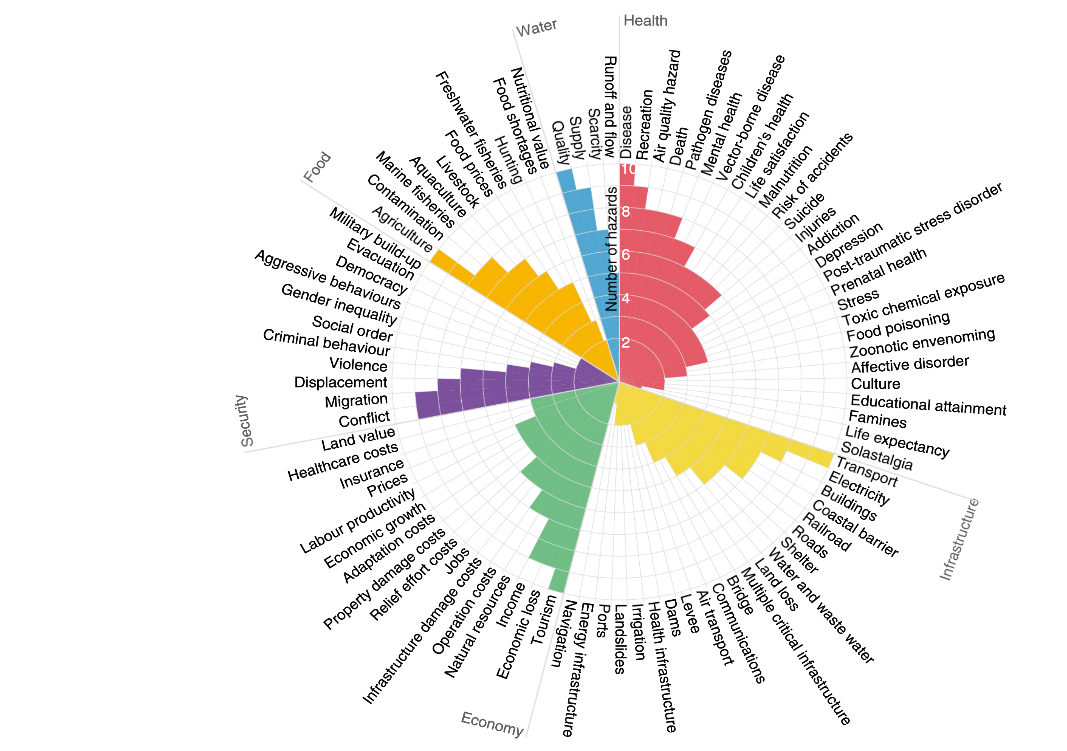
Mr Trump, “there are 467 pathways” by which we are impacted by climate change
A new scientific paper published in the prestigious journal Nature has analysed over 3,000 relevant academic papers to find examples of climate hazards impacting humans. Their conclusions are startling.
Yesterday, chief climate denier, Donald Trump, rejected his own Government’s National Climate Change Assessment, a 1,656 page work by 300 scientists and 13 federal agencies, and the most comprehensive study to date outlining the consequences of climate change to the US.
Asked outside the White House about the findings, Trump replied “I’ve seen it, I’ve read some of it, and it’s fine.” But then he added: “I don’t believe it.”
The trouble for Trump is that he can stick his head in the sand and carry on denying the evidence, but every day the evidence gets stronger. A new scientific paper published in the prestigious journal Nature has just analysed over 3,000 relevant academic papers to find examples of climate hazards impacting humans.
Their conclusions are startling.
The paper was written by twenty three scientists who “found traceable evidence for 467 pathways by which human health, water, food, economy, infrastructure and security have been recently impacted by climate hazards such as warming, heatwaves, precipitation, drought, floods, fires, storms, sea-level rise and changes in natural land cover and ocean chemistry.”
The paper outlines in detail how climate has impacted health, water, food, economy and infrastructure and makes for sobering reading.
To give you one specific example, on health, they found: “27 attributes of human health impacted by climate hazards, of which death, disease and mental health were the most commonly observed.”
“Climate hazards” says the paper, “were related to numerous conditions that disrupt body function. Increased morbidity (such as cardiac and respiratory disorders) due to heat illness occurred during heatwaves, whereas injuries were common during floods, storms and fires.”
They continued that “Respiratory problems were associated with increased ozone pollution from heatwaves and fires, dust from droughts, mould following storms, organic pollutants released from melting ice and pollen released during extended flowering periods caused by warming.”
The scientists added that climate hazards affected mental health, too. For instance, “depression and post-traumatic stress disorder were reported after storms in the United States, floods in the United Kingdom and heat-waves in France. People experienced existential distress during drought in Australia, increased substance abuse after storms in the USA”.
All Trump has to do is ask the people of Paradise in California about how their physical and mental health has been impacted by the recent devastating wildfires, and you would hope he would be able to get beyond his blind anti-climate bigotry. But he could not even get the name of the town right when asked by reporters.
Like many studies, the scientists suggest that things are going to get a whole lot worse if action is not sooner. “By 2100, the world’s population will be exposed concurrently to the equivalent of the largest magnitude in one of these hazards if emissions are aggressively reduced, or three if they are not, with some tropical coastal areas facing up to six simultaneous hazards,” the scientists conclude.
Lead author Camilo Mora, Associate Professor of Geography in the College of Social Sciences at the University of Hawaii at Manoa, said: “Greenhouse gas emissions pose a broad threat to humanity by simultaneously intensifying many hazards that have proven harmful in the past. Further, we predict that by 2100 the number of hazards occurring concurrently will increase, making it even more difficult for people to cope.”

